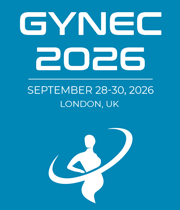Title : Prevalence of osteoporosis in macroprolactinemia & hyperprolactinemia and co-relation with estrogen levels
Abstract:
Background: Hyperprolactinemia is associated with hypogonadism and estrogen deficiency, both of which are known contributors to bone mineral density (BMD) loss. While osteoporosis is well established in hyperprolactinemia, little is known about its prevalence in macroprolactinemia, a biologically inactive form of elevated prolactin. Understanding the relationship between prolactin excess, estrogen levels, and BMD may guide screening strategies in women at risk.
Objectives: To determine the prevalence of osteoporosis and osteopenia in macroprolactinemia and true hyperprolactinemia, and to explore correlations between BMD, serum prolactin, and estradiol (E2) levels.
Methods: This cross-sectional study included 38 hyperprolactinemia patients (9 pituitary adenoma, 15 drug-induced, 11 idiopathic, 3 other secondary causes) and 10 age-matched healthy controls. Dual-energy X-ray absorptiometry (DEXA) was performed at the lumbar spine, femoral neck, hip, and forearm. Both T-scores and Z-scores were analyzed. Serum prolactin, estradiol, calcium, phosphate, and alkaline phosphatase were measured. Statistical analyses included t-tests, ANOVA, regression models, and correlation tests, with p <0.05 considered significant.
Results: Low BMD (osteopenia or osteoporosis) was detected in 25/38 hyperprolactinemia patients (65.8%) compared to 6/10 controls (60%), though differences were not statistically significant (p=0.479). Osteoporosis was found in 13.2% of hyperprolactinemia cases, while no control exhibited osteoporosis. Among subgroups, low BMD was present in 50% of macroprolactinemia cases and 70% of true hyperprolactinemia cases, though differences were not significant. No significant correlation was observed between serum prolactin or estradiol levels and BMD. Overweight patients demonstrated significantly lower estradiol levels compared to normal-weight patients; however, higher BMI appeared protective against osteoporosis.
Conclusion: Osteopenia and osteoporosis are common in patients with hyperprolactinemia, but their prevalence does not significantly differ from controls in this limited cohort. Macroprolactinemia appears less strongly associated with low BMD than true hyperprolactinemia, suggesting osteoporosis may be primarily a manifestation of the latter. While serum estradiol levels did not correlate directly with BMD, BMI emerged as a protective factor. These findings highlight the need for larger studies and suggest selective screening for osteoporosis in hyperprolactinemia patients, especially those with additional risk factors.
Keywords: Hyperprolactinemia, Macroprolactinemia, Osteoporosis, Bone Mineral Density, Estradiol




